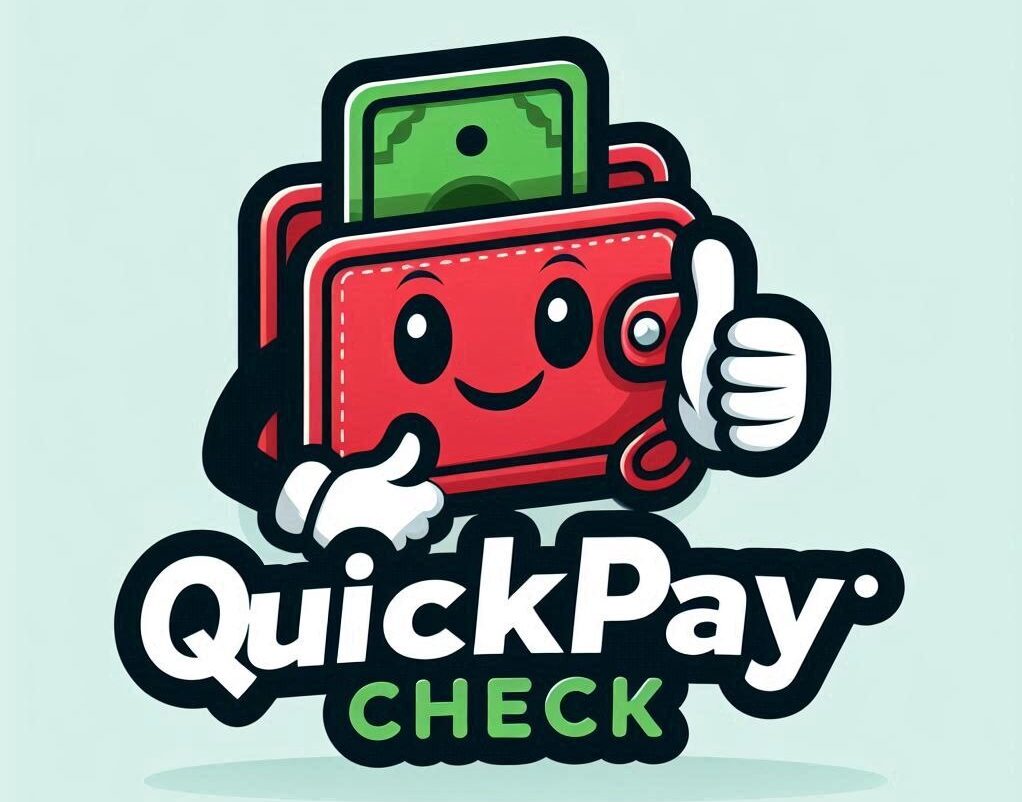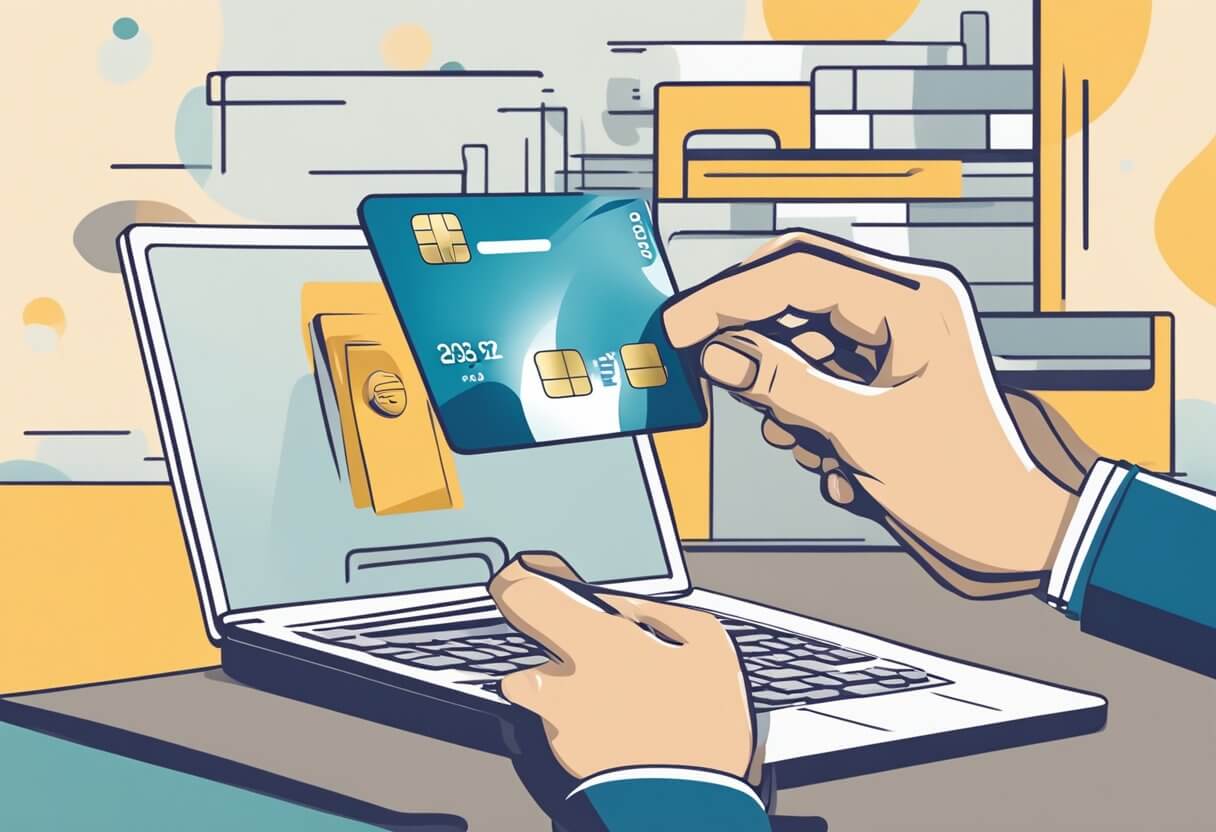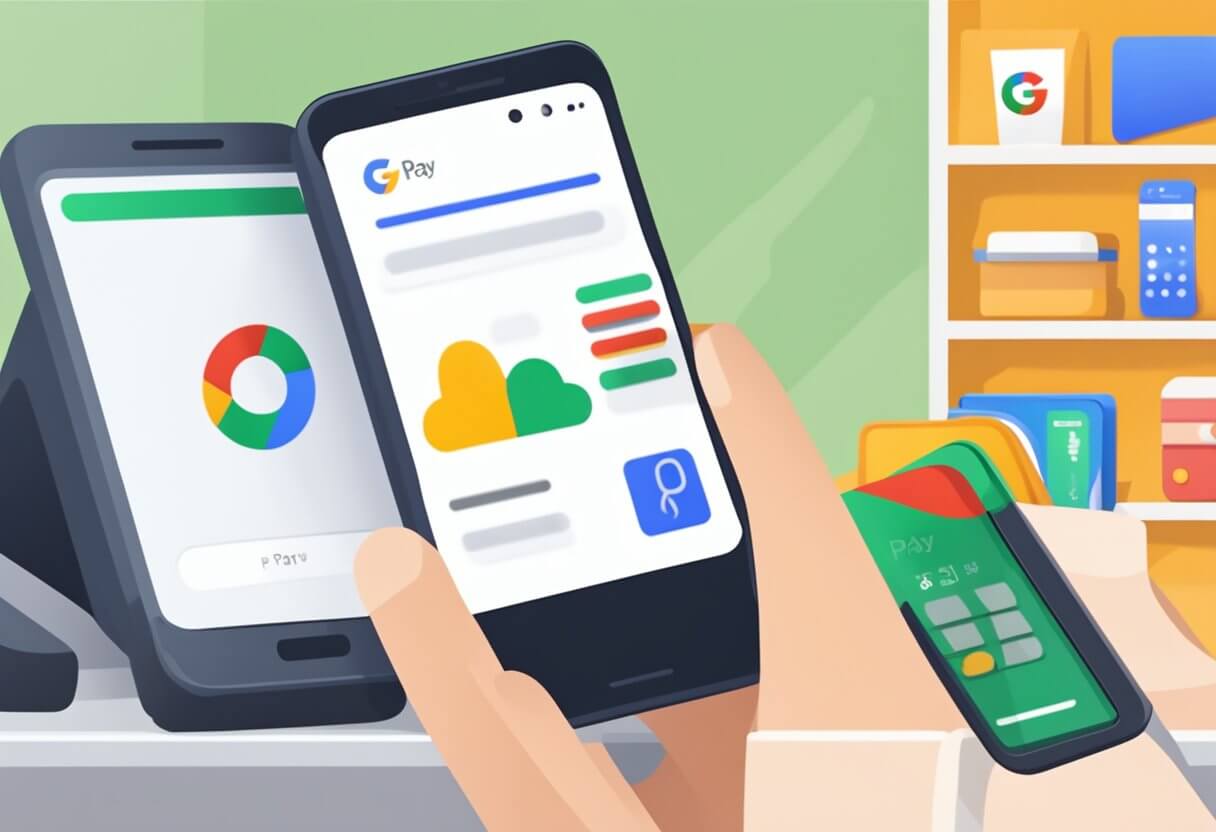The popularity of mobile and contactless payment platforms like Apple Pay, Google Pay and Samsung Pay has absolutely exploded over the past few years. As more consumers ditch their bulky wallets in favor of paying through intuitive smartphone apps, major retailers have taken notice.
Many brick-and-mortar and online merchants now gladly welcome mobile payments from the top platforms. A few notable holdouts remain, however – which leads us to the pressing question at hand:
Does the largest retailer in the world – Walmart – take Google Pay?
The short answer is no, Walmart does not currently accept Google Pay as a payment method in its stores. But the longer explanation behind this policy reveals some fascinating insights into Walmart’s mobile payment strategy.
In this comprehensive guide, we’ll unpack everything you need to know about making payments with Google Pay and alternative options at Walmart:
- Why doesn’t Walmart take Google Pay or similar third-party apps?
- How does Walmart’s own payment app and service – Walmart Pay – work? What are the pros and cons?
- What other common payment options are available for Walmart shoppers?
- Could acceptance of Google Pay be coming in the future?
- Which payment platform is right for you when shopping at Walmart?
Let’s dive in…
Why Hasn’t Walmart Adopted Google Pay?
Walmart powered ahead of rivals by introducing Walmart Pay – its own proprietary mobile payment service integrated directly into the Walmart app – back in 2016. And the retail behemoth has continued doubling down on its own offering rather than embracing third-party options.
In 2022, Walmart made waves when it announced it would discontinue accepting Google Pay across all its stores and websites.
This strategic move likely boiled down to a few key reasons:
Promoting Adoption of Walmart Pay
By not accepting platforms like Google Pay or Apple Pay, Walmart can steer more customers towards downloading the Walmart app and registering for Walmart Pay. The retailer can then collect valuable shopper data and provide targeted services that third-party apps don’t allow.
And once customers get into the habit of using Walmart Pay, they generally stick with this frictionless option instead of having to set up yet another payment app. It’s all about cultivating loyalty.
Contractual Obligations
Walmart has a close partnership with Merchant Customer Exchange (MCX) – a consortium that supplies the core mobile payment technology behind Walmart Pay.
The retailer may be contractually bound to avoid integrating certain competing payment platforms under this long-term agreement. Say goodbye to Google Pay and Apple Pay.
Avoiding Third-Party Fees
Services like Google Pay and Apple Pay charge merchants small transaction fees whenever customers use their platforms to make purchases. These costs add up over time.
By only allowing its own Walmart Pay mobile wallet in-store, the retailer escapes paying any third-party fees. A savvy cost-saving strategy.
Payments Power Struggle
Finally, as the largest retailer worldwide, Walmart holds immense power in dictating payment terms with vendors and partners. Accepting a payment service like Google Pay – owned by a competitor in the shopping sphere – reduces this leverage ever so slightly.
Maintaining dominance over its own payment ecosystem allows Walmart to shape strategy to its unique advantage. Once again, it’s about control.
Now let’s explore how Walmart Pay works and stacks up…
Introducing Walmart Pay: Functions and Perks
Walmart Pay is a proprietary mobile wallet feature embedded within the retailer’s app for Android and iPhone devices. It offers an ultra-convenient way for customers to pay in Walmart stores without reaching for their physical credit cards or cash.
Here’s an overview of how Walmart Pay works and its notable features:
Link Payment Methods
First you must link valid payment options to your Walmart Pay account. This can include major debit/credit cards, PayPal, Walmart gift cards or prepaid debit cards. Just enter your details through the app to add them.
Pay Using QR Codes
Once set up, Walmart Pay users can simply open the app when shopping in-store to generate a unique QR code at checkout. An associate scans this code using existing point-of-sale hardware and payment is instantly processed using your linked card or source. No NFC tapping required!
This QR method offers wider compatibility with older smartphones compared to similar services that rely on NFC chips for tap-to-pay functionality.
Earn Rewards
One nice perk of using Walmart Pay is you can accumulate rewards points on purchases and receive exclusive discounts not available elsewhere. This provides some decent incentives for loyal Walmart shoppers.
Store Digital Gift Cards
Have unused Walmart gift card balances sitting around? Add these to Walmart Pay as well to redeem gift card amounts towards purchases with ease. Far simpler than carrying around a stack of physical gift cards!
Enhanced Security
Walmart Pay also boasts advanced security protections like encryption, tokenization of card data, and the ability to lock accounts instantly if your device is lost or a card is compromised. Reassuring safeguards for privacy-focused customers.
For those wary of linking payment sources through apps, classic options like cash, physical gift cards and credit cards are still accepted as a backup.
Walmart Payment Methods Beyond Google Pay
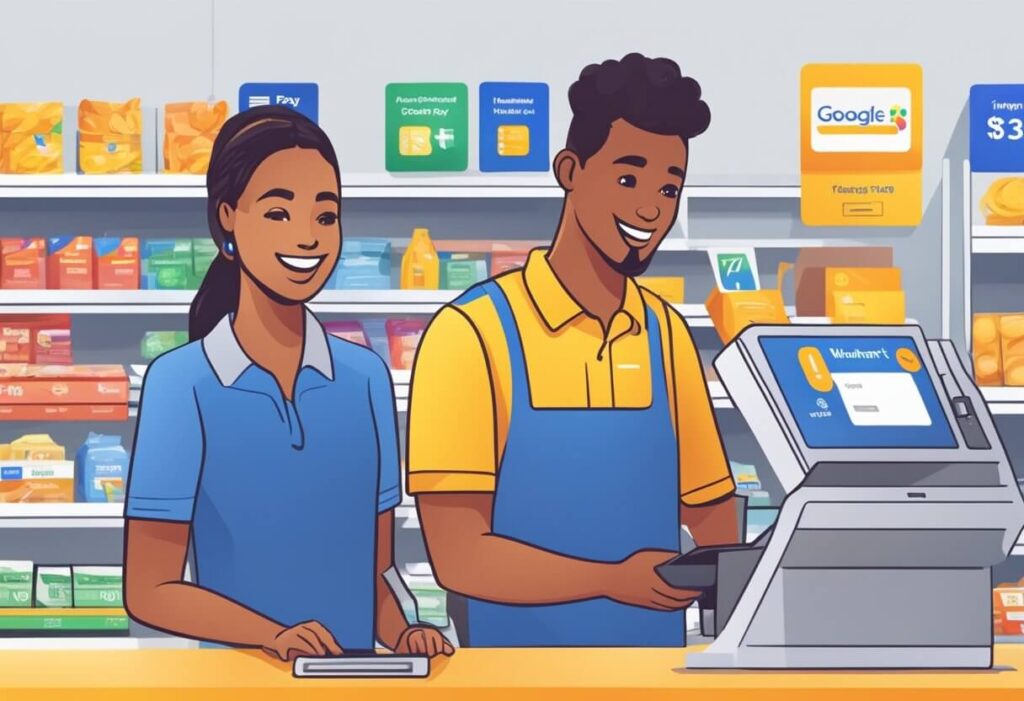
The absence of Google Pay at Walmart stores undoubtedly causes headaches for some diehard Android users. But before swearing off shopping there forever in protest, it helps to understand the range of alternative payment options available:
- Credit Cards – Visa, Mastercard, American Express and Discover debit and credit cards continue to be widely accepted. Apple Card works as well.
- Walmart Pay – As outlined above, Walmart’s native payment app opens mobile functionality similar to Google Pay.
- PayPal – Linking your PayPal account to Walmart Checkout allows payment via this popular online wallet.
- Gift Cards – Both physical and eGift cards make great gifts for Walmart shoppers. Amounts apply instantly at checkout.
- Cash – Good old cash (notes and coins) are still welcomed if you prefer anonymous transactions.
- Affirm – Walmart offers the “Buy Now, Pay Later” financing option through this integrated partner.
With robust choice like this across payment types and preferences, Walmart has all the bases covered even sans acceptance of Google Pay. Consumers can take their pick.
And things function reasonably smoothly in-store these days following some tweaks…
Has Google Pay Always Been Off Limits at Walmart?
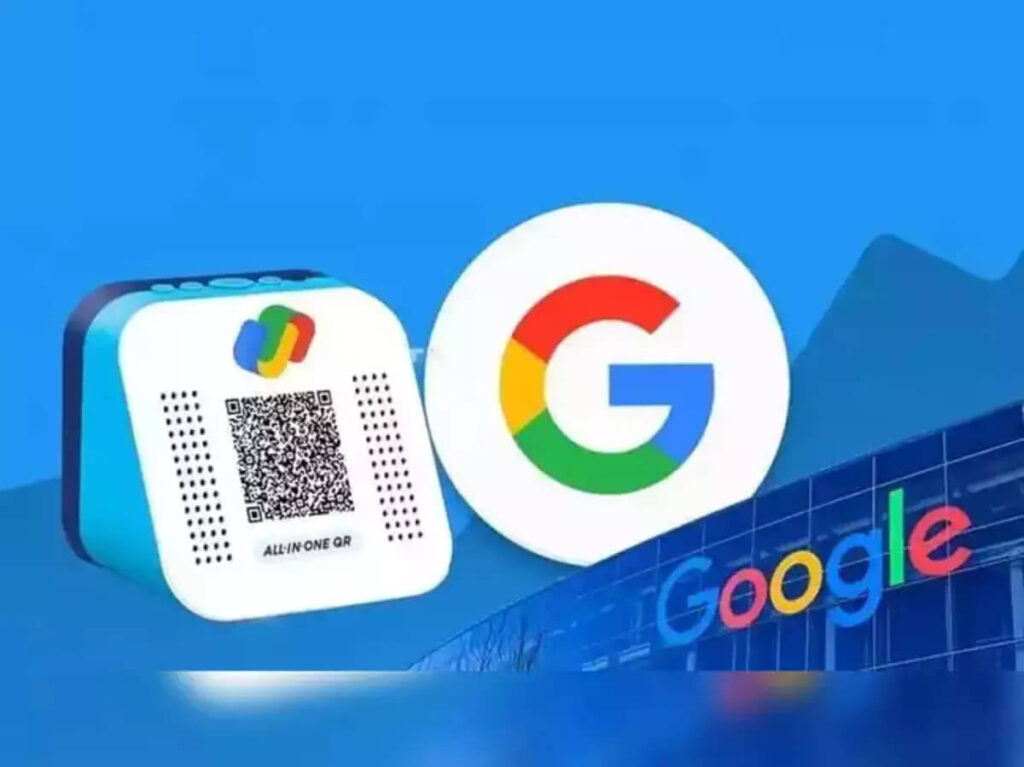
While Walmart Pay rolled out across the retailer’s operations in 2016, Google Pay was actually accepted for in-store purchases between 2018 and early 2022. So what changed?
Ultimately, Walmart likely deemed the results underwhelming. Customers didn’t opt to use Google Pay in droves despite years of support. And serious competitors lurked behind this third-party wallet.
Cutting ties enabled Walmart to stop splitting a sliver of payments revenue with Google and remove a potential data vulnerability. The cost-benefit ratio no longer stacked up.
Doubling down on its customizable, proprietary platform proved the logical route forward as mobile commerce maturation continued. And the Google Pay ban went ahead in 2022 without much fanfare or consequence suggests the data backed this move.
The door isn’t necessarily shut permanently, however. Walmart leadership has never explicitly stated Google Pay can never return if market dynamics evolve significantly.
It would likely take extreme consumer demand within Walmart’s core demographics to warrant a reversal. But don’t hold your breath for now.
Onwards to assessing which mobile payment solutions may work best for different customers today…
Choosing the Right Payment Platform at Walmart
When it comes to selecting a preferred payment method for shopping at Walmart, you have choices even if Google Pay isn’t among them. Which option should you lean towards? Here are a few key considerations:
1. Smartphone Operating System
If you’re an Android user, Walmart Pay provides mobile functionality akin to what you’re already accustomed to with Google Pay. Perks like rewards and gift cards give it an edge for Walmart diehards.
Apple iPhone owners may favor Apple Pay if they shop here casually. But learning Walmart Pay specifics could prove worthwhile for loyal customers.
Of course, keeping a spare credit card or cash handy caters to all.
2. Frequency of Shopping
For regular Walmart shoppers, adopting Walmart Pay makes perfect sense to unlock rewards points, easier returns through digital receipts and faster checkout. Infrequent visitors may skip the app download unless you already have it.
3. Preferred Payment Type
Credit card welcome bonuses, cash back, purchase protection and other perks sway some shoppers’ preferences between payment vehicles. Ensure you use the optimal card for category spend via whatever medium accepted.
4. Privacy Preferences
Mobile wallet apps ingest troves of consumer behavior data – a benefit for Walmart but an annoyance for privacy champions. Limiting use of these platforms is reasonable if you fall in the latter category.
5. Tech-Savvy Needs
Digital payment technology appeals more to younger, mobile-centric demographics. But seniors or analog lovers still welcome the simplicity of cash/cards for low-friction transactions. Catering to preferences and technical literacy levels is key.
No single solution ticks every box for the masses here. Weighing personal priorities around convenience, privacy, functionality and shopping habits helps determine what works best if Google Pay is off the table at Walmart.
With a bit of forethought, most shoppers quickly adapt to the available options.
The Future: Will Walmart Ever Take Google Pay?
Despite Google Pay not currently being accepted at any Walmart locations, could support return down the road as mobile technology and consumer expectations advance?
The short answer seems to be maybe…but longer-term.
Walmart has invested seriously in building out its proprietary Walmart Pay ecosystem over six years now. The service boasts strong adoption among loyal customers to the brand. Integrations with existing point-of-sale infrastructure, custom features and merchant agreements also make large-scale payment platform changes an arduous undertaking.
However, Walmart has adapted before when it previously did accept Google Pay between 2018-2022. As the retail landscape evolves digitally, pressure could mount to cater to younger shoppers via channels they actively engage with daily.
And competition in the online grocery and product delivery race is fiercer each year with Amazon and newcomers challenging Walmart’s dominant perch. Maintaining relevance across demographics remains vital even for a retail titan.
On the flip side, advances in QR code applications and NFC technology could allow Walmart Pay to keep pace with early impressions of Google Pay if attention spans shift. Walmart knows its customer base better than anyone and will invest accordingly.
For now, Google Pay remains exiled from Walmart stores. But winds of change swirl constantly in commerce. Don’t bet against a return someday pending landscape shifts. Just don’t expect imminent reinstatement.
Conclusion: Weighing Your Walmart Payment Options
Hopefully this detailed deep dive clarifies the current situation regarding Walmart’s lack of Google Pay acceptance presently. Proprietary mobile wallet Walmart Pay takes center stage – for better or worse.
While Google Pay devotees must adapt when shopping here for now, numerous alternative payment methods exist catering to an array of preferences. Whether you value privacy, rewards potential, technical ease of use or classic analog options, bases are covered. Understanding exactly how Walmart Pay stacks up and where it falls short helps inform individual choices.
And the door is never closed permanently on an eventual Google Pay return pending evolving consumer sentiments in the years ahead. Retailers must stay nimble, especially when tech disruption accelerates on all fronts.
But don’t hold your breath for 2024! For now just know what to expect when that wireless payment terminal approaches at the Walmart checkout counter sans your familiar Google Pay availability. Backups stand at the ready…
What questions remain unanswered around Walmart’s payment strategies as digital transformation charges ahead? Which mobile platforms do you rely on when shopping the aisles? Sound off in the comments below!
